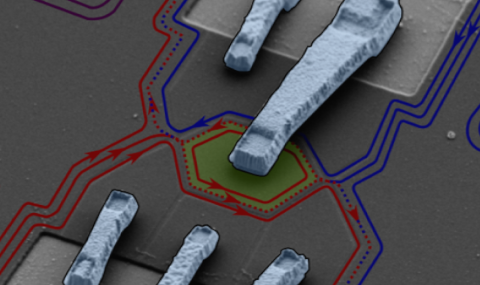Quantum interferometers are powerful tools for probing the wave-nature and exchange statistics of indistinguishable particles. Of particular interest are interferometers formed by the chiral, one dimensional (1D) edge channels of the quantum Hall effect (QHE) that guide electrons without dissipation. Using quantum point contacts (QPCs) as beam-splitters, these 1D channels can be split and recombined, enabling interference of charged particles. Such quantum Hall interferometers (QHIs) can be used for studying exchange statistics of anyonic quasiparticles.
In this line of research, we are developing a robust QHI fabrication technique in van der Waals (vdW) materials, for example, Fabry-Pérot (FP). By careful heterostructure design, we are able to measure pure Aharonov-Bohm (AB) interference effect in the integer QHE, a major technical challenge in finite size FP interferometers. Our QHI with tunable QPCs presents a versatile platform for interferometer studies in vdW materials and enables future experiments in the fractional QHE.


